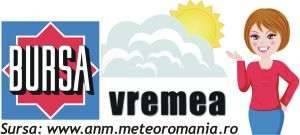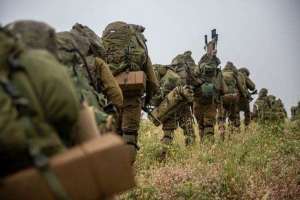• Analysts expect it to drop to 8,5%, by the end of 2009
The National Bank took the first step towards a policy of relaxation of the monetary policy by opting to cut the benchmark interest rate by 0,25 percentage points. Thus, the benchmark interest rate has reached 10%, and the decision of the NBR becomes applicable on Thursday. The NBR also decided to keep the minimum required reserves ratios unchanged, for banks" liabilities denominated in leu or foreign currencies.
This is the first time in the last 19 months that the NBR cut the benchmark interest rate, after having continually increased it.
The last rate cut was on June 26th, 2007, from 7,25% to 7% a year. Since then, the NBR has adopted a significantly restrictive monetary policy, by increasing the benchmark interest rate seven times.
Cătălina Constantinescu, chief economist at Royal Bank of Scotland, stated: "I think the NBR wanted to send a signal that we are entering a stage of monetary policy relaxation, which will help the evolution of the real economy". However, according to Mrs. Constantinescu, this interest rate cut is not enough to unfreeze lending, nor is it enough to help the economy, and further benchmark rate cuts are needed. She also said: "As interest rates on the market are at least 4 percentage points higher, it is necessary for the NBR to take steps to bring the interest rates on the market closer to the benchmark interest rate".
In Mrs. Constantinescu"s opinion, by the end of 2009, the latter could reach 8,5%, according to a basic scenario.
Banks would be far more relaxed on the matter of liquidity and they would not care so much about interest rates anymore if the NBR would be willing to inject liquidity in the market, either by cutting the lombard interest rate, by reducing the minimum required reserves or through REPO auctions, Mrs. Constantinescu said.
Valentin Lazea, chief economist of the NBR, recently stated, that a tightening of the fiscal and budget policy is needed, before the monetary policy can be relaxed, given the current economic conditions. Thus, the cut of the benchmark interest rate by just 0,25 percentage points, could mean that the NBR feels that the tax and budget restrictions that the Government passed recently are not convincing enough for the NBR to further relax the monetary policy.
Lucian Anghel, chief economist of BCR (Romanian Commercial Bank), was expecting this cut, and he also feels that by the end of the year, the key interest rate could reach 8,5%. The relaxation of the monetary policy is needed for the continuation of lending in the economy, as at the end of 2008 lending dropped across the board.
"Romania"s economy will not be able to function well without lending. The relaxation of the monetary policy will only be felt after a few quarters, and the NBR will be watching the evolution of the real economy very careful", Lucian Anghel explained.
This year, BCR"s chief economist expects a gradual cut of the benchmark interest rate, but he emphasized that it is possible that the Central Bank will remain cautious by keeping a 3% spread between the key interest rate and inflation.
Rozalia Pal, chief economist at Unicredit Ţiriac Bank, expects the interest rate to reach 8.5% by the end of 2009.
Mrs. Pal said she was not surprised by the decision of the NBR, but she emphasized that the effectiveness of the decision is limited, as the interbank market interest rate is still great.
"I think that in the near future the interest rate will be cut again and the minimum required reserve level will be reduced", said Unicredit Ţiriac Bank"s chief economist.
Vlad Muscalu, ING Bank economist, claims that a cut of the lombard rate or of the minimum required reserve would have had a more significant on the liquidity of the market, as the interest rates that the banks use are the ones for the lending facility (lombard) of the NBR, which is at 14% now, and 6% for deposits placed with the Central Bank. The benchmark interest rate of 10% is only used when the NBR intervenes on the market, said the economist.
"Most likely the latest decision of the National Bank was made in trying to avoid an even steeper depreciation of the leu given the current evolution of its exchange rate", Vlad Muscalu added.
Florin Ilie, head of ING Securities, claims that the NBR could have made this decision following the analysis of the risks in the banking system. He said: "Both cutting the benchmark interest rate and the minimum required reserves would have meant a relaxation of the monetary policy. BNR opted for a gradual relaxation of the latter, following its analysis of the systemic risks. It is possible that the NBR felt there is a heightened risk in the Romanian banking system and the desire to reduce this risk prevailed".
At the moment, the minimum required reserve for liabilities in lei is 18%, and 40% for liabilities in foreign currencies.
The cut in the monetary policy rate will also lower the two benchmark rates connected to it. The rate for the NBR"s permanent facilities, lombard credit goes down from 14.25 percent to 14 percent per year, while the rate for deposits slips to an annual 6 percent from the current 6.25 percent.
The two rates are fixed along a symmetric range of plus or minus four percentage points from the benchmark rate. The 0,25 percentage points rate cut and the keeping of the minimum required reserve levels on hold met the expectations of bank analysts.



















































